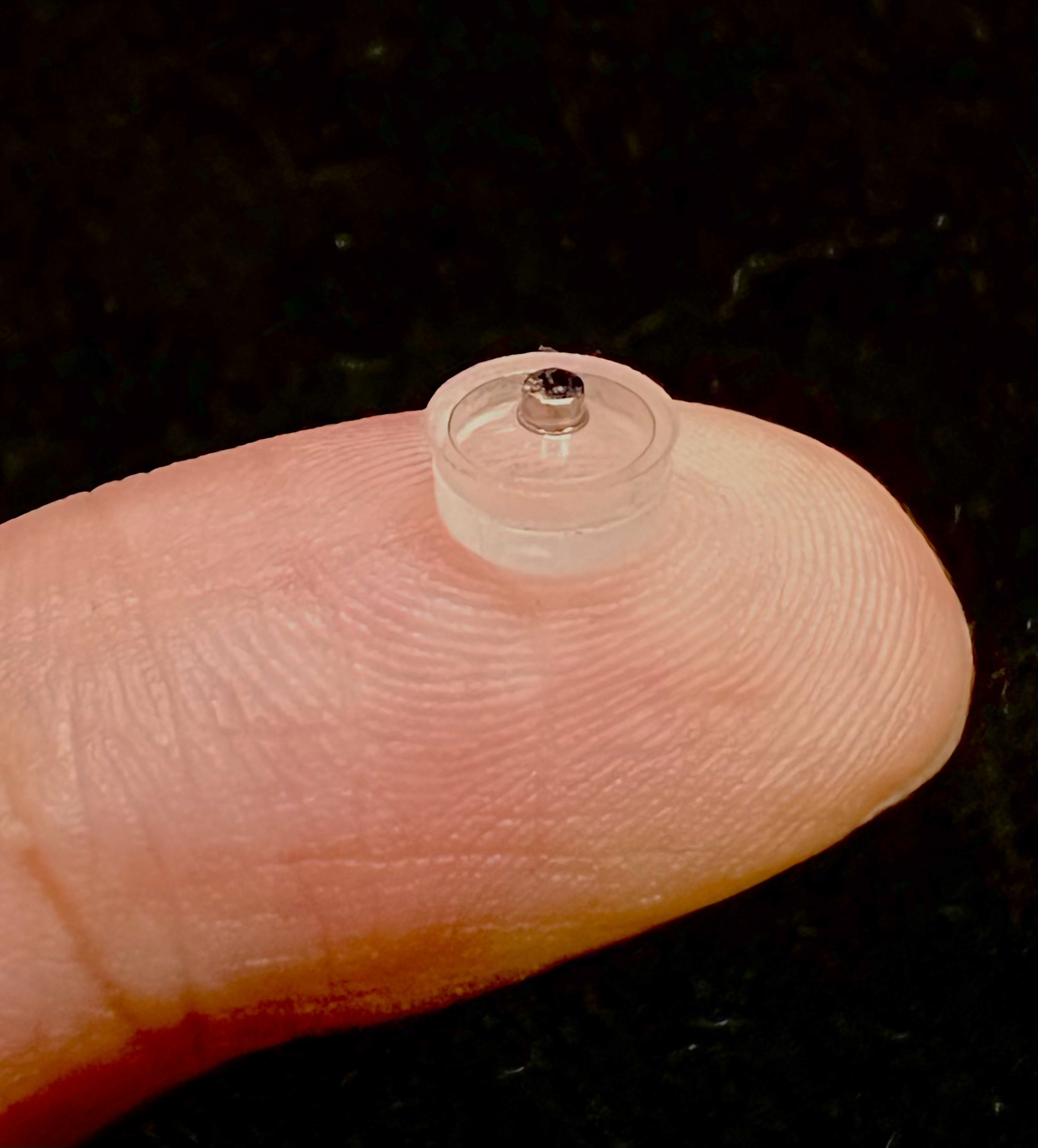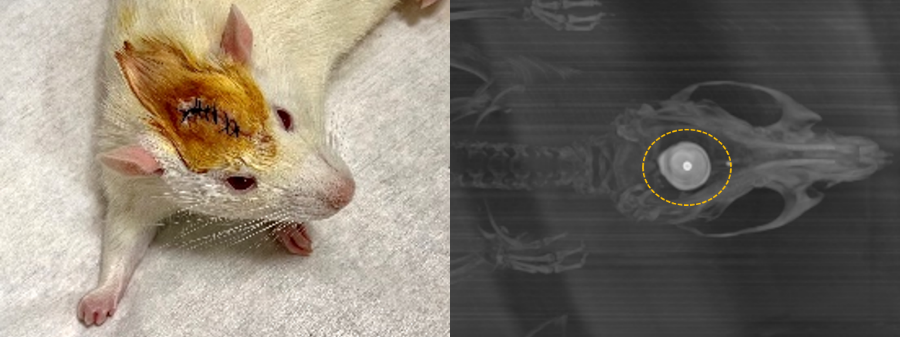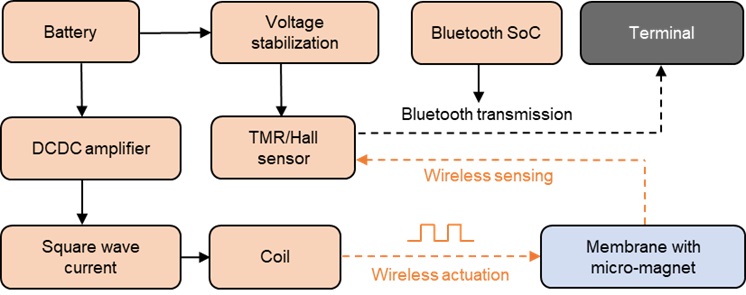Peking University, March 21, 2024: A millimeter-scale, chip-less, and battery-less implant can wirelessly monitor a series of parameters within your body and communicate with a wearable device attached to the skin.
In a study published in the journal Science Advances on March 20, 2024, researchers from Peking University (PKU) have unveiled a miniaturized implantable sensor capable of health monitoring without the need for transcutaneous (*of medications or medical devices penetrating or absorbing through unbroken skin) wires, integrated circuit chips, or bulky readout equipment, thereby reducing infection risks, improving biocompatibility, and enhancing portability.
Image of a magnetic implant on the fingertip (Credit: Wan Ji, Peking University).
Han Mengdi from Peking University, the lead researcher of this project, expressed optimism about the implications of this innovation. “Our miniaturized system presents exciting possibilities for advancing health monitoring. By inserting a tiny magnetic implant into the body, it can provide a rich set of real-time data related to your health status," he said, "We aim to use such magnetic implants to enhance the way we monitor and manage health.”
In experiments conducted on rat models, the system showed promising capabilities in measuring critical parameters, such as cerebrospinal fluid viscosity, intracranial pressure, and glucose levels. This compact system holds the potential for continuous, wireless monitoring of a wide range of biophysical and biochemical conditions within living organisms.
Photo and computerized tomography image of a rat with the magnetic implant (Credit: Wan Ji, Peking University).
“Beyond monitoring signals in the brain, the versatility of our system can be further extended,” said Wan Ji, a Ph.D. Student in Han lab and co-first author of the paper. “It can be deployed to monitor a wide array of vital signs and parameters across various body regions, from cardiovascular indicators like blood pressure and viscosity to dental and orthopedic forces, abdominal pressure, and even molecular and cellular distributions within the body.” This opens up unprecedented possibilities for diagnosing, treating, and managing a plethora of acute and chronic diseases.
“This system comprises millimeter-scale, chip-less, and battery-less magnetic implants paired with a seamlessly integrated wearable device. Unlike traditional methods, the wearable device has the capability to initiate a damped vibration in the magnetic implants, subsequently capturing their ensuing vibration motions wirelessly,” said Nie Zhongyi, a Ph.D. Student in Han lab and co-first author of the paper. “These motions serve as precise indicators of the biophysical conditions surrounding the implants and the concentration of specific biochemicals, depending on surface modifications.”
Block diagram of the system for wireless sensing (Credit: Wan Ji, Peking University).
“While the tiny magnetic implants show advanced capabilities in wireless biosensing, challenges lie ahead,” Mengdi Han said, “Long-term stability and biocompatibility of the magnetic implants require further investigation and improvement. Nevertheless, with ongoing advancements in technology and deeper exploration of research, these challenges are expected to be addressed effectively.”
These tiny magnetic implants not only advance the development of health monitoring technology but also signify a potential transformation in the medical field. With further development, this technology could potentially contribute to an enhanced standard of healthcare, empowering individuals to more proactively manage their well-being with greater ease and accuracy.
The paper, titled “Millimeter-scale magnetic implants paired with a fully integrated wearable device for wireless biophysical and biochemical sensing,” was supported by the National Natural Science Foundation of China (No. 62104009), the Emerging Engineering Interdisciplinary Project, Peking University, the Fundamental Research Funds for the Central Universities, and Peking Nanofab Laboratory.
Source: College of Future Technology


